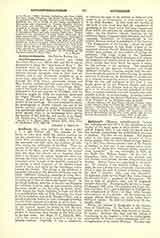

Antidoron (Gr., anti, instead of; doron, a gift; i.e. a gift instead of). The remains of the loaves or cakes from which the various portions are cut for consecration in the Mass, according to the Greek Rite, are gathered up on a plate, or salver, in the sanctuary and kept upon the prothesis, or side altar, during the celebration of the Mass. They are usually cut up into small fragments, and, at the conclusion of the Mass, after the celebrant has retired from the altar, the deacon (or in churches where there is no deacon, the priest) brings the salver out through the royal doors and standing in front of the iconostasis gives to each of the faithful, supposed to be fasting, a small fragment of the blessed bread which is taken and eaten by the worshipper before leaving the church. The giving of the antidoron is regularly followed in the Russian Orthodox and the Greek (Hellenic) Orthodox churches at every Mass, and it is an interesting sight to watch the worshippers crowding up in lines to obtain the blessed bread. In the Greek Catholic churches of Austria and Hungary the antidoron is given only on rare occasions during the year, chiefly on the Saturday in Easter week; while among the Greek Catholics of Italy and Sicily it is usually given only on Holy Thursday, the Feast of the Assumption, that of St. Nicolas of Myra, and at certain weekday masses in Lent; although according to some local customs it is given on other days. It may seem strange that the earliest historical reference to this custom should be found in the Western Church. It is mentioned in the 118th letter of St. Augustine to Januarius (now known as the 54th letter in the new order. See Migne, P.L., XXXIII, 200), and in the canons of a local council in Gaul in the seventh century. Originally it was a substitute, or solatium for such of the faithful as were not prepared to go to Communion or were unable to get to the Holy Sacrifice. If they could not partake of the body of Our Lord they had the consolation of partaking of the bread which had been blessed and from which the portions for consecration had been taken. In the Eastern Church mention of the antidoron began to appear about the ninth and tenth centuries. Germanius of Constantinople is the earliest Eastern author to mention it in his treatise, “The Explanation of the Liturgy“, about the ninth century. Subsequent to him many writers of the separated Eastern Church (Balsamon, Colina, Pachemeros) have written on the custom of giving the antidoron. The usage today in the Orthodox Greek Church, following the Nomocanon, is to employ the fragments or unused pieces of the various prosphorce, except that from which the agnetz is taken, for the purpose of the antidoron. The canonical regulations of the Russian Orthodox and Greek (Hellenic) Orthodox Churches require that the antidoron should be consumed before leaving the church, and that it should not be distributed to unbelievers or to persons undergoing penance before absolution. While the rite still continues in the East it was finally given up by the Western Church, and now only survives in the Roman Rite in the pain bent given in the French churches and cathedrals at High Mass, in certain churches of Lower Canada, and occasionally in Italy, on certain feasts. A similar custom also obtains among the Syrian Christians (Christians of St. Thomas) of the Malabar coast in India.
ANDREW J. SHIPMAN

